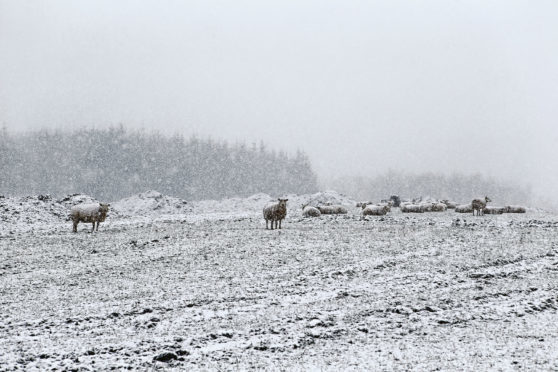Bad weather hit the output of almost all Scottish agriculture in the past year, with only soft-fruit production escaping, according to new figures from the Scottish Government.
Sheep and cattle numbers fell and there were reductions in the areas of cereals and potatoes grown.
However, soft fruit saw an increase.
The snow storm in the spring affected sheep numbers, which fell to a five-year low. The total sheep count fell 6%, or 392,000, with lamb numbers falling 8%, and breeding ewes numbers down 4%.
Cattle numbers followed a similar trend and are down to 1.76 million, continuing a long-term decline since the 1970s. Both dairy and beef numbers fell slightly.
The Scottish Government chief statistician released the results from the June 2018 Agricultural Census.
It also shows a 3% decrease in the total area of cereals grown.
The amount of barley grown decreased by 1%, while wheat and oats acreages were down 9% and 2% respectively.
The area of rye grown increased by 6% to just over 14,300 acres.
Meanwhile, vegetables used to feed animals have increased for the first time since 2010.
This 5% rise coincided with a decrease in vegetables grown for human consumption for the first time since 2011.
The statistics also showed an estimated 2% increase in poultry numbers to 14.5 million birds, with a 4% rise in broiler numbers.
In addition to these statistics, the number of people estimated to be working in agriculture has decreased by 400 to 66,600.
Rented agricultural land has also fallen to around 22%, its first noticeable drop since 2014.
There were more than 27,000 acres, 11,000 of land rented under the new modern limited duration tenancy (MLDT) arrangements.
Farming and agricultural activity accounted for around 80% of the Scottish landscape, with a total of 51,200 agricultural holdings.
